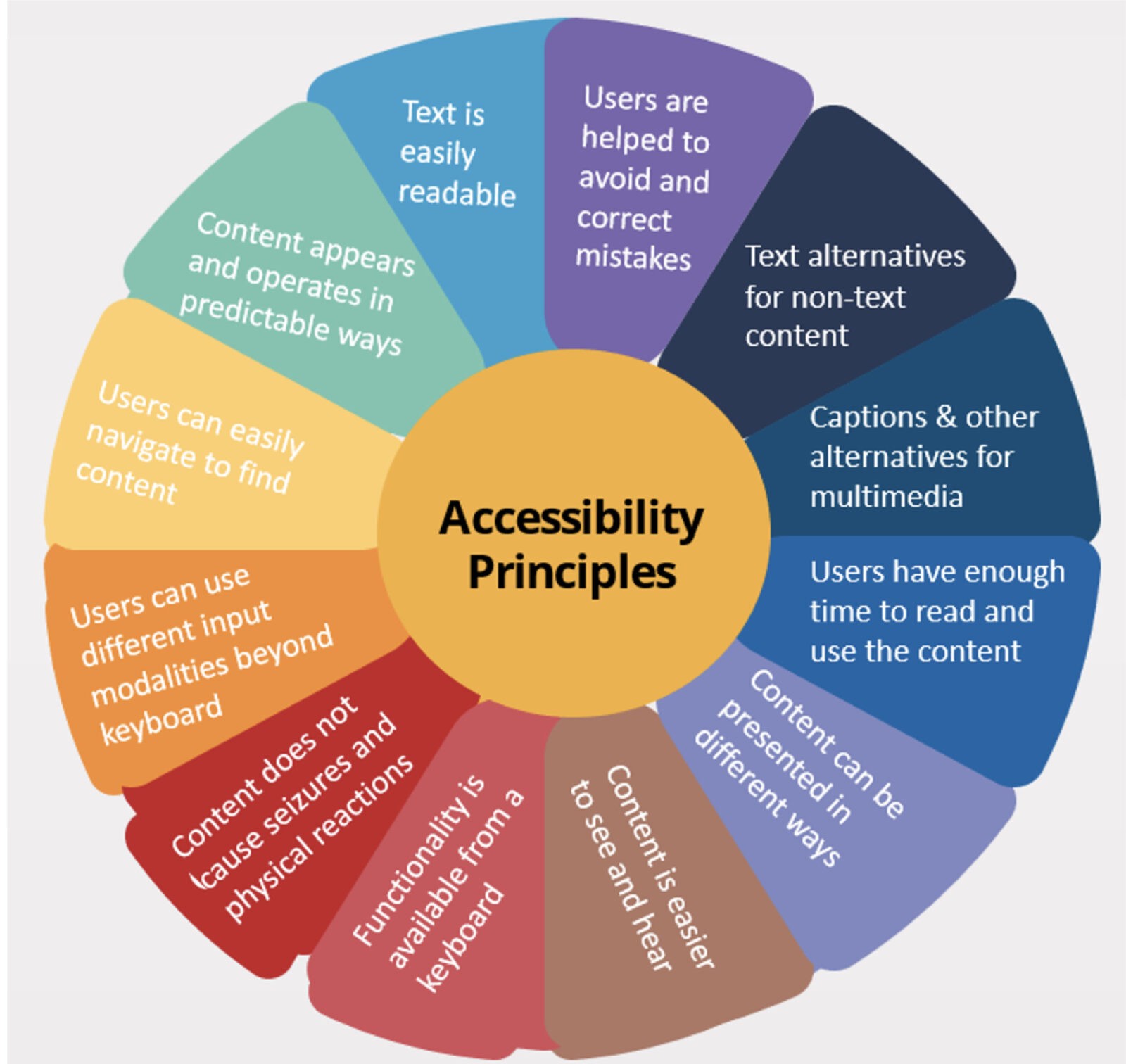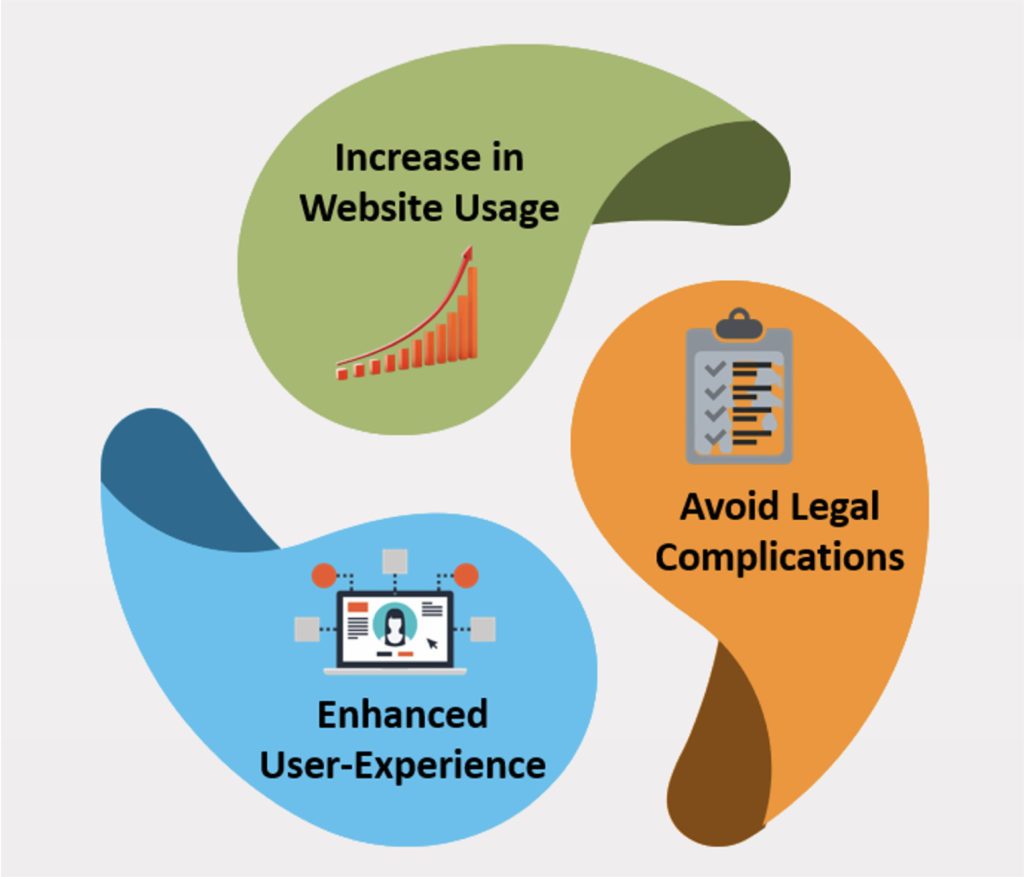Maya is a 10-year-old child. She is deaf and uses high-power reading glasses due to partial visual impairment. At school, she often faces difficulty in engaging with her fellow mates because of not understanding the language spoken by her peers.
She sits in the first row of her class, still, she faces difficulty in reading the board. Maya’s class teacher notices this problem and comes up with an approach to help Maya with her accessibility issues.
As per the definition of ‘Accessibility’ on dictionary.com, it means ‘‘the quality of being suitable or adapted for use by people with disabilities’’.
To understand some common issues which people with physical barriers face are the usage of mouse or keyboard, audio or video without captions or subtitles, font size, etc.
How do people with different disabilities access websites?
- Students with hearing difficulties can take the assistance of tools like captions, transcripts, or subtitles for audios, videos and visual presentation wherever possible.
- People with visual impairment can use assistive screen readers like NVDA (Windows), VoiceOver (Apple), etc.
- People with limited motor skills face difficulty when using devices like mouse and keyboard. As such, some adaptive equipment’s come in handy like bigger keyboards, on-screen keyboards, or scanning keywords which can be operated with a single switch.
- Similarly, for people with learning disabilities, there is a reference to material consistency, complexity and predictability, that comes in handy.
In view of accessibility, the study material has provided a framework for problem-solving and dedicated tasks that must be solved. In order to achieve all this, the content must be written in simple language, without sarcasm, idioms, metaphors, and other risky forms that lead to ambiguity. Therefore, all these learning systems should follow the standards and specifications of WCAG 2.0, ATAG 2.0, ARIA 1.0 [14] and be accessible to all (APIP).
Tools like Achecker, Web Accessibility Checker, or Google Lighthouse evaluate the accessibility of e-learning and other web content. They provide a list of known, likely and potential accessibility issues, as well as a detailed description of potential strategies to improve issues.
The use of assistive technology for educational platforms will help overcome the user’s struggle with learning courses and communication challenges.
Making a site accessible may sound easy but it isn’t as simple as clicking some buttons or putting it through a simple, one size fits all test, and then proclaiming it to be accessible.
Below are some aspects of accessibility that need to be considered when checking how compliant the educational platform is:

- The site should be coded in a way that makes it possible for screen readers to access it and read its contents to users with visual This includes media such as images as well the structure of the markup, headings, etc.
- Audios and videos should be captioned or have a transcript available for users who aren’t able to access them.
- Content should be adaptable so that if it’s presented in different ways (e.g. on different types of devices) it should not lose its meaning. Hence, this implies using standards-compliant code and not making meaning dependent on the visual structure of the page.
- Content should be distinguishable – it is important that the content should be easy to see, read or hear. That means ensuring fonts are clear and sufficiently large, using right contrasting colors for text and backgrounds. And the links should be made visually obvious.
- All functionality in the site should be keyboard and mouse accessible.
- It should be possible to consume content at the user’s own pace, that means (for Eg) the video should have pause and rewind buttons and the text shouldn’t disappear after a certain time lapse.
- Pages shouldn’t contain anything that flashes more than three times in any one second, to reduce the risk of seizures.
- Navigation should be accessible, with the option to skip repeated blocks of content (such as the navigation menu) and any links or navigation coded in the same structure as they’re presented.
- The content should be easy to read, with appropriate language for a wider audience.
- The site should behave in a predictable way, with no sudden changes.
- Any forms should include help text to assist people to fill them out correctly.
Ways to test the website’s accessibility –
To test the websites’ compliance related to accessibility, one or more of the following methods can be employed:
- Validation of site using validation tools like Achecker or Google Lighthouse or Wave: Running a site through tools such as Wave will thoroughly check the page’s code and categorize the issues identified. These tools will generate a report covering more common problems like:
- Images missing Alt tags,
- PDF linking,
- Table headers,
- Proper semantics like headings, navigation, etc.
- Running the site through a screen reader like NVDA, JAWS, etc: Screen readers are essential for people who are blind, visually impaired, illiterate, or have learning disabilities. They attempt to convey what people with normal eyesight see on a display to their users via non-visual means, like text-to-speech, sound icons, or a braille device.
- Conduct a ‘human’ review: Carrying out User Testing with actual people with some disabilities to see the real-time accessibility of the site will help in identifying issues that may have escaped detection by the software.
Having a school website that’s not accessible, especially post the pandemic fiasco, will affect the site’s performance, its search engine rankings, and (most importantly) its effectiveness at engaging with the community you serve. So, it’s high time we carry out an accessibility audit on the educational sites and make any changes identified to have a more effective, inclusive site.
How Does Impelsys Help the Education & Content Providers?
Impelsys has helped many leading Education & Content Providers to make their application accessible with the help of various tools and techniques. Using tools like NVDA screen reader, Color Contrast Analyzer, Wave webaim, Lighthouse, aChecker and more, we ensured the applications are seamless to traverse with only a keyboard. We ensured all the accessibility guidelines under WCAG 2.0 are followed in the applications tested.
Our wide clientele has realized varied benefits after implementing accessibility compliance in their applications, mentioned below are a few of them:

- Significant increase in website usage: Around 15% of the population in the world has some form of disability. If the websites are built keeping the accessibility guidelines in mind, it will reach a wider global audience with disabilities and resulting in increasing the Organizations revenue potential.
- Avoid legal complications: Many countries have made it mandatory for the websites to meet the accessibility criteria before going live. In some cases, the policies are applicable only to government websites.
- Enhanced user experience: Using accessibility tools help in a better-quality code base for applications. This is largely because accessibility testing tools can identify various errors that create general problems with its usability. Since keeping accessible design makes the application’s navigation, text clarity, appearance, and many other features more appealing and user friendly in addition to fewer bugs and faster loading time.
Accessibility testing is an excellent methodology that explains how easily users can navigate, access, and understand web/mobile app content. Whether the testing is automated or manual, it is important to check compliance with specific accessibility testing guidelines such as WCAG standards as a reference.
For enterprises, however, it is also extremely significant to understand that creating accessible content is not just helpful for disabled people but helps other users as well. Making accessibility testing a regular part of the software testing process and implementing all the necessary checks early can improve the overall experience of using an application or website.
Authored by –
Rinky Lahoty